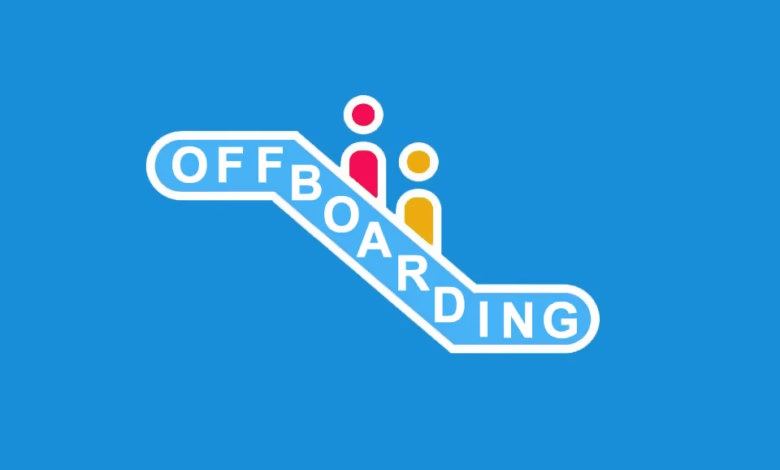Offboarding: The Essential Guide to Smooth Transitions

What is Offboarding?
Offboarding refers to the formal process that occurs when an employee leaves an organization. This critical phase entails several systematic steps designed to ensure a smooth transition for both the departing employee and the company. The offboarding process is crucial for maintaining organizational integrity and preserving company culture, making it essential to handle exits professionally and respectfully.
Offboarding can occur under various circumstances. One of the most common is voluntary resignation, where an employee decides to leave the organization, often for career advancement, personal reasons, or better opportunities. Another scenario is involuntary termination, which may arise from layoffs, poor performance, or organizational restructuring. Additionally, retirement represents a significant moment of offboarding, where an employee has completed their professional journey within the company.
The approach to offboarding can differ markedly depending on the cause for departure. In cases of voluntary resignation, there may be an opportunity for an open dialogue, where the employee can provide feedback about their experience and help the organization identify potential areas for improvement. Conversely, during layoffs or terminations, the focus is often on compliance with legal requirements and providing support to the affected employees, such as severance packages, exit interviews, and job placement assistance.
Regardless of the circumstance, the offboarding process should aim to uphold dignity and respect for the departing individual, while ensuring that knowledge transfer occurs to mitigate the impact on the remaining team and maintain productivity. In this way, effective offboarding becomes more than just a procedure; it is an essential strategy for fostering a healthy work environment, integrating lessons learned, and promoting a seamless transition that honors both the departing employee and the company’s future objectives.
The Importance of a Structured Offboarding Process
In today’s competitive business environment, the significance of a structured offboarding process cannot be overstated. Offboarding refers to the systematic approach taken when an employee leaves an organization, whether voluntarily or involuntarily. A well-defined offboarding procedure is essential for both the departing employee and the organization. It serves multiple critical purposes, contributing to a smoother transition that ultimately benefits all parties involved.
One primary advantage of having a comprehensive offboarding strategy is the effective transfer of knowledge. When an employee exits, they often take with them invaluable insights, skills, and institutional knowledge. A structured process ensures that important information is documented and shared with remaining team members, thereby minimizing operational disruptions. This transfer of knowledge helps organizations maintain continuity and fosters a culture of collaboration, which is vital for team cohesion.
Moreover, safeguarding company data during the offboarding process is paramount. Employees who leave, particularly in sensitive positions, may possess access to proprietary information and confidential client details. A meticulous offboarding checklist enables employers to recover company assets, revoke access to sensitive systems, and reinforce data security protocols. This aspect is increasingly critical in the digital age, where data breaches can have severe repercussions for organizations.
Another overlooked benefit of an efficient offboarding process is its effect on team morale. When team members observe a respectful and organized departure of their colleague, it helps cultivate a positive working environment. It demonstrates that the organization values its employees, even as they transition out. This practice not only enhances existing employees’ morale but also boosts the company’s reputation in the broader job market, thus aiding in future talent retention.
Ultimately, a structured offboarding process reinforces employer branding. As positive experiences of departing employees circulate, they contribute to a favorable company image, attracting prospective candidates. A thoughtful offboarding strategy encompasses several elements that resonate with organizational goals, highlighting its pivotal role in fostering healthy workplace dynamics.
Key Steps in the Offboarding Process
The offboarding process represents a critical phase in the employment lifecycle, necessitating meticulous attention to detail to ensure seamless transitions. The initial step involves informing all relevant stakeholders about the impending departure of the employee. This communication can include team members, HR personnel, and upper management, allowing for collaborative adjustments to workflow or team dynamics.
Subsequently, conducting exit interviews is a vital component of effective offboarding. These interviews provide an opportunity for the departing employee to express their thoughts on their tenure with the organization, potentially offering insights that can inform future improvements. It is advisable to prepare a structured set of questions that explore various elements of the employee experience, ranging from workplace culture to job satisfaction and potential areas of improvement within the company.

The transition of duties follows closely, involving the strategic delegation of tasks to remaining staff or successors. It is essential to create a detailed handover plan that outlines ongoing projects, deadlines, and critical contacts. This step mitigates disruptions within the team and ensures that responsibilities are clearly articulated, facilitating continuity in operations. Effective documentation of routines and processes can immensely aid the incoming personnel.
Lastly, the return of company property stands as a significant step in formally concluding the offboarding process. This phase typically includes retrieving items such as electronic devices, identification badges, and access cards, which helps in safeguarding company assets and maintaining security protocols. To wrap up this process smoothly, planning an exit checklist can guide both HR and the departing employee through the necessary steps to ensure no detail is overlooked.
Throughout each step of the offboarding process, the emphasis on clear communication and supportive dialogue cannot be overstated, as these elements are crucial in fostering a respectful and considerate environment during the transition.
Common Challenges and How to Overcome Them
Offboarding, the process organizations use to manage the departure of employees, can present various challenges that may hinder smooth transitions. One of the most prevalent issues is resistance from employees who may feel anxious or uncertain about their departure. This resistance can create tension between the departing employee and management, potentially resulting in a negative atmosphere within the workplace.
To mitigate this, it is crucial to foster an environment of open communication. Clear and empathetic conversations should be initiated, allowing employees to express their concerns and feelings regarding their exit. Providing detailed information about the offboarding process can help alleviate uncertainties and build trust. Furthermore, exit interviews can be a valuable tool for understanding employee sentiments while gathering insights that can improve retention strategies in the future.
Another significant challenge during offboarding is the loss of institutional knowledge. Employees departing from an organization often take with them valuable skills, experiences, and insights that are not easily replaced. To address this issue, organizations should implement comprehensive knowledge transfer practices. This could involve developing structured documentation or facilitating shadowing opportunities before employees leave. Encouraging departing employees to share their knowledge with their successors can bridge the gap and ensure a smoother transition.
Lastly, the impact on team dynamics is a concern that cannot be overlooked. The departure of a team member can disrupt workflows and morale. Organizations should take proactive steps to address this by providing support to the remaining team members. Holding team meetings to discuss changes and reassure employees about their roles can help maintain stability during transitions. Utilizing technology to streamline the offboarding process can also facilitate effective communication and minimize disruption.
By addressing these common challenges with empathy, structured processes, and effective communication, organizations can enhance their offboarding experience, fostering positive transitions for both departing employees and the remaining team.
You Must Also Read This One On Icryptoai.co.uk



